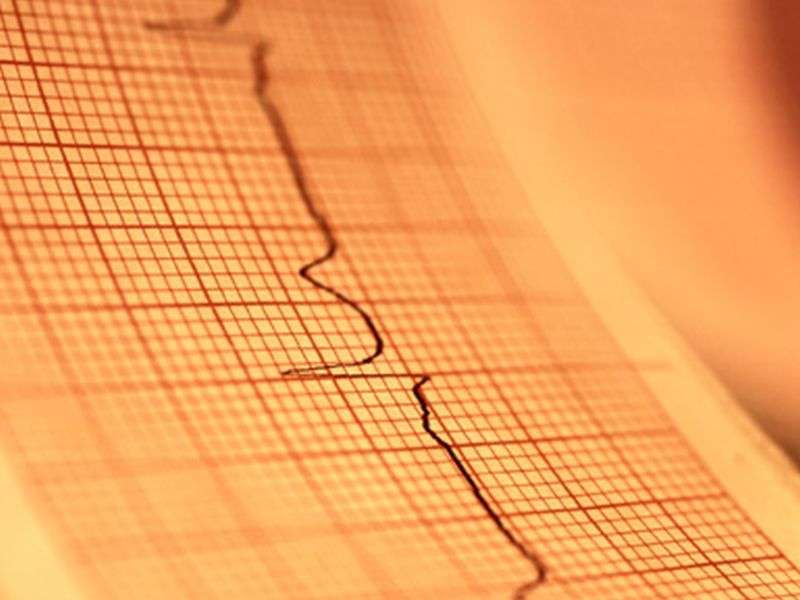Differences in arrhythmic risk in nocturnal, daytime hypoglycemia

(HealthDay)—For young adults with type 1 diabetes, there are differences in arrhythmic risk and cardiac repolarization during nocturnal versus daytime hypoglycemia, according to a study published online Feb. 17 in Diabetes Care.
Peter Novodvorsky, from the University of Sheffield in the United Kingdom, and colleagues examined the effect of nocturnal and daytime clinical hypoglycemia on electrocardiogram (ECG) in 37 individuals with type 1 diabetes. Participants underwent 96 hours of simultaneous ambulatory ECG and blinded continuous interstitial glucose monitoring (CGM).
The researchers obtained 2,395 hours of simultaneous ECG and CGM recordings: 159 and 1,355 hours were designated hypoglycemia and euglycemia. The median duration of hypoglycemia was longer during the night than during the daytime (60 versus 44 minutes; P = 0.020). Overall, 24.1 and 51.0 percent of nocturnal and daytime episodes, respectively, were symptomatic. Compared with matched euglycemia, bradycardia was more frequent during nocturnal hypoglycemia (incidence rate ratio [IRR], 6.44; 95 percent confidence interval [CI], 6.26 to 6.66; P < 0.001). Bradycardia was less frequent during daytime hypoglycemia (IRR, 0.023; 95 percent CI, 0.002 to 0.26; P = 0.002), while atrial ectopics were more frequent (IRR, 2.29; 95 percent CI, 1.19 to 4.39; P = 0.013). During nocturnal and daytime hypoglycemia there was prolonged QTc, T-peak to T-end interval duration, and decreased T-wave symmetry.
"Our data provide further evidence that hypoglycemia is proarrhythmogenic," the authors write.
One author disclosed financial ties to the pharmaceutical industry.
More information: Abstract/Full Text (subscription or payment may be required)
Copyright © 2017 HealthDay. All rights reserved.





















